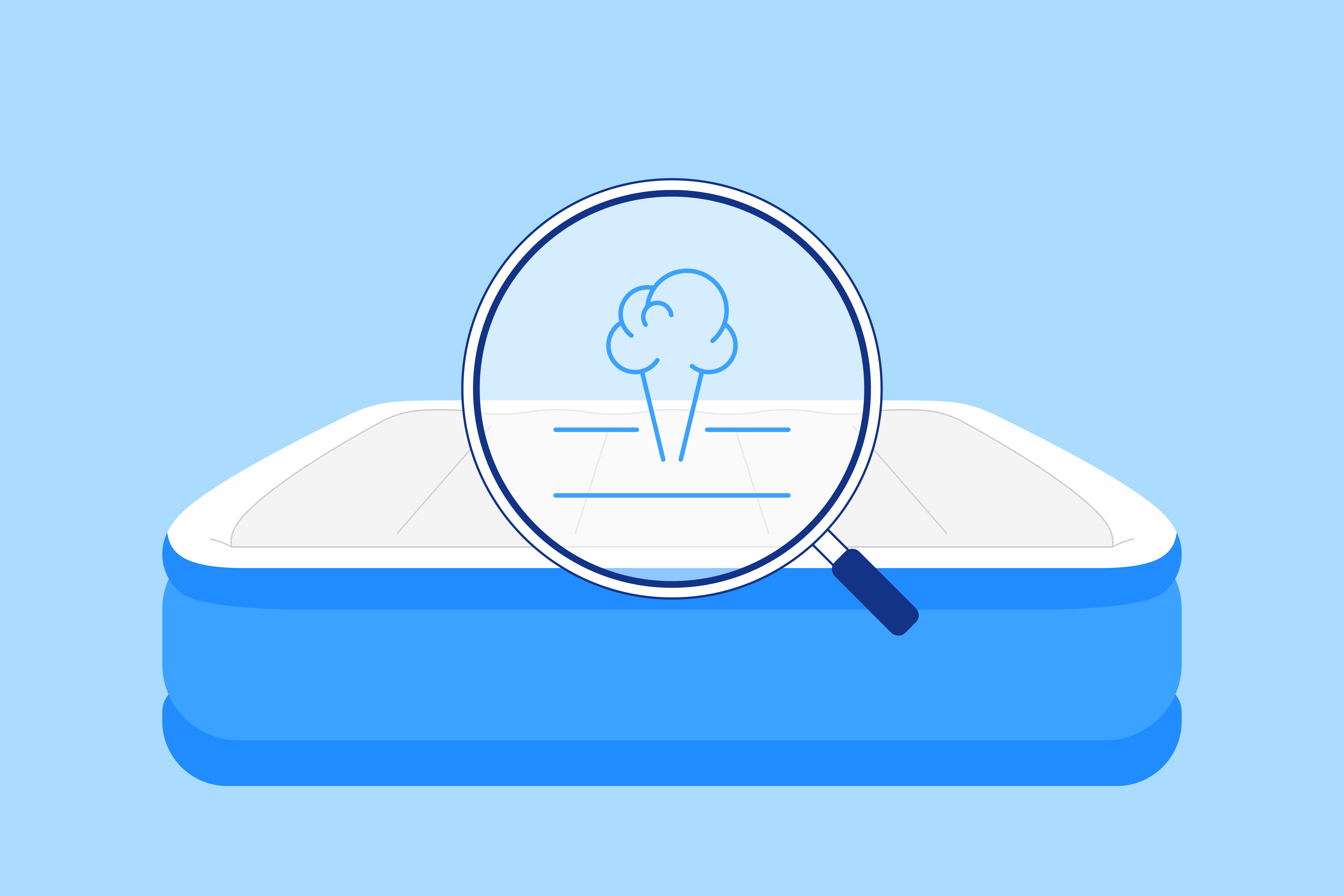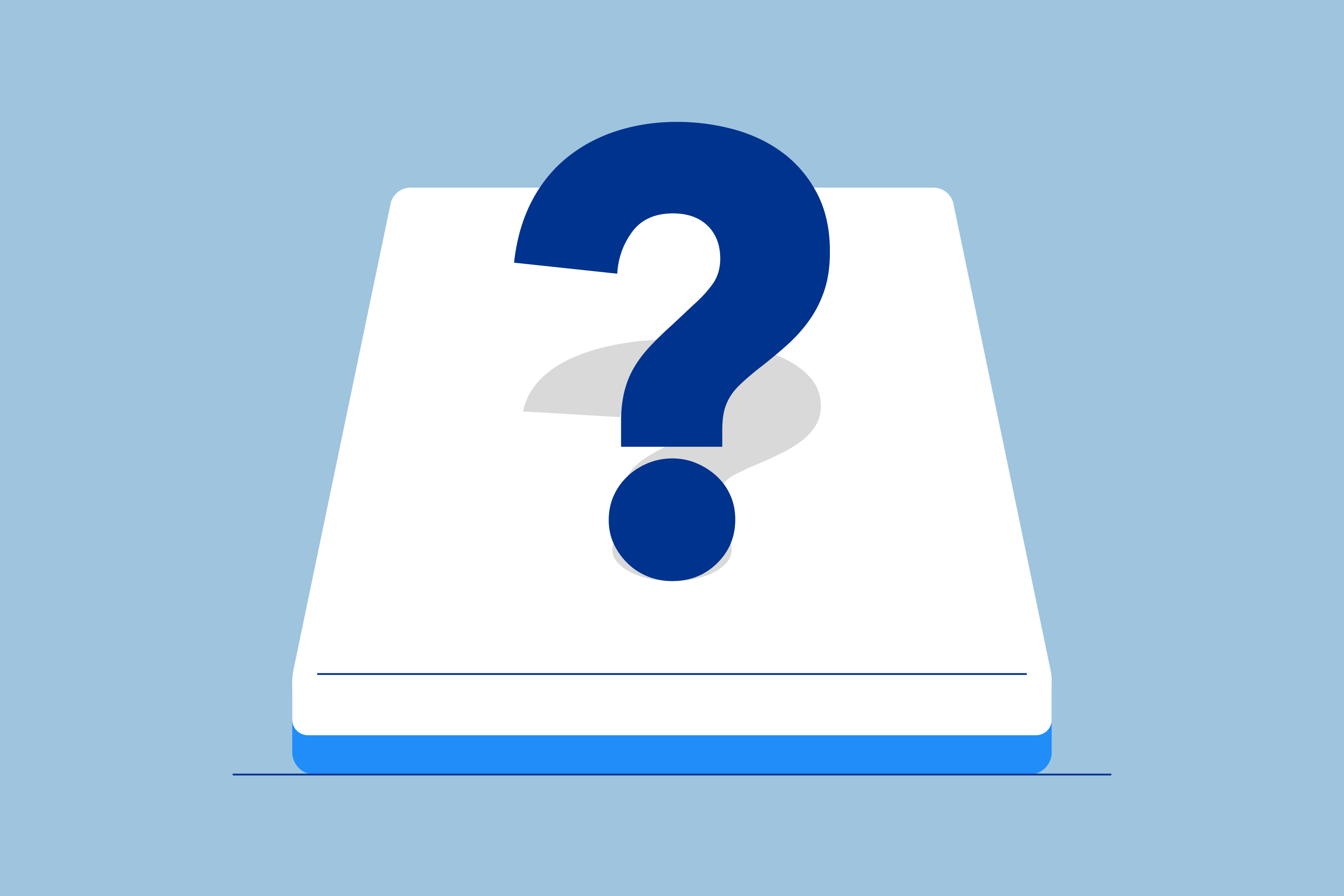Key Takeaways
- Regular Cleaning is Essential: Due to the accumulation of dead skin cells, sweat, and body oil, mattress toppers can become a breeding ground for dust mites, bacteria, and allergens. Regular cleaning is necessary to prevent allergic reactions and maintain a hygienic sleeping environment.
- Cleaning Methods: Memory foam mattress toppers cannot be cleaned in a washing machine, as it can damage the foam. Instead, methods like vacuum cleaning, spot cleaning stains, and using gentle solutions like laundry detergent, baking soda, vinegar, or dish soap are recommended. These methods help remove dirt, stains, and odors effectively.
- Extending the Lifespan: To extend the lifespan of your memory foam mattress topper, consider using fitted sheets to protect it from dust and moisture. Additionally, investing in a mattress protector can prevent stains from spills. Proper drying of the topper after cleaning is crucial to avoid mold and mildew growth.
Considering we spend 7 to 8 hours in bed, a lot of our dead skin cells, sweat, and body oil gets accumulated on mattress toppers. The skin cells and body fluids invite dust mites, bacteria, fungi, and other allergens to your bed.
Dust mites feed on your dead skin cells and thrive in the warm and humid atmosphere of your bed. They can trigger symptoms such as sneezing, coughing, runny nose, watery eyes, itchy throat, breathing difficulties, and skin rashes. A mattress topper can help things.
However, it’s best to clean a new mattress topper regularly to avoid allergic reactions. In this article, we discuss general rules to clean your topper and how to extend its life.
Quick Guide: A 30-Second Summary
| Best Memory Foam Mattress Topper | Amerisleep Lift Topper |
Steps to Clean a Memory Foam Mattress Topper
While you can toss your bedsheets and pillow covers into the washing machine, you cannot clean an entire mattress topper the same way. Memory foam gets damaged or ripped in the washing machine. At best, you can toss in the mattress topper cover to clean it, though not all toppers include fabric toppers. An egg crate mattress topper, for example, is usually sold without one.
There are different cleaning mattress toppers processes depending on what you need for your mattress topper. Use any one or more of the following steps depending on the situation.
Vacuum Clean
 Before vacuuming your mattress topper, remove it from your bed and place it on the floor. Placing the topper on a hard and flat surface, such as the floor, makes it easier for you to reach all the corners. Vacuum clean a mattress topper with a soft brush attachment because a harder brush can damage the fabric cover of the topper.
Before vacuuming your mattress topper, remove it from your bed and place it on the floor. Placing the topper on a hard and flat surface, such as the floor, makes it easier for you to reach all the corners. Vacuum clean a mattress topper with a soft brush attachment because a harder brush can damage the fabric cover of the topper.
Use circular motions to gently clean all dust particles and grime accumulated on the topper. Powerful, handheld vacuum cleaners or water-based vacuum cleaners are effective in cleaning your mattress toppers. Once you’re done vacuuming one side, make sure you flip it over and vacuum the other side.
If you use a water-based vacuum cleaner, ensure your mattress topper is completely dry before putting it back on the bed. The topper may take anywhere between 10 to 24 hours to dry depending on its thickness. Mattress toppers may be between 2 to 4 inches thick.
As part of regular maintenance, it’s best to vacuum your mattress topper once a week, or every time you wash your sheets. Frequent vacuuming prevents the accumulation of dust and debris.
Spot Clean Stains
 Sometimes you may notice some stains on your memory foam mattress toppers. These can be caused by sweat and body oils, or mattress topper stains due to accidental spills. Spot cleaning the stains as soon as you notice is crucial to avoid set stains.
Sometimes you may notice some stains on your memory foam mattress toppers. These can be caused by sweat and body oils, or mattress topper stains due to accidental spills. Spot cleaning the stains as soon as you notice is crucial to avoid set stains.
Use a light-colored, clean cloth to remove the stains, because darker colors may bleed when dipped in the cleaning solution. There are general rules to remove stains but we recommend reading the instructions on the care label before you use anything to clean your mattress topper.
When it comes to liquid cleaners, you want to avoid spraying and soaking a foam topper. Instead, you want to blot and dab the stain with a clean cloth or small towel. However, for more severe stains that are set in, you may need to leave a small amount of cleaner soaking for a while.
If you do this, let the topper fully dry before you make up the bed again. You may also want to sprinkle plenty of baking soda around the area to suck up any lingering moisture.
Laundry Detergent
 Use a mild liquid laundry detergent diluted with water to clean your mattress topper. Avoid low-quality or powder detergents because they may affect the texture of the fabric cover or discolor it.
Use a mild liquid laundry detergent diluted with water to clean your mattress topper. Avoid low-quality or powder detergents because they may affect the texture of the fabric cover or discolor it.
Mix detergent and water in equal parts in a bowl. Dip a soft cloth in the solution and rub it on the stain in circular motions. Let it rest for 30 minutes.
Then take another damp cloth to wipe off the solution. Gradually rub the damp cloth over the stain a few times, ensuring there’s no detergent residue on the mattress topper. Use a clean dry towel to blot the area.
Even if you don’t have any stains on your mattress topper, you can still use laundry detergent to deodorize and clean your mattress after vacuuming. Mix one part detergent with two parts warm water in a spray bottle.
Gently spray over the topper, avoiding excess water on the foam. Keep moving the bottle, as you spray throughout the entire surface of the mattress topper. Excess water may damage the structure of memory foam and it also delays the drying process. Wait for the topper to dry completely before placing it on your bed.
Dish Soap
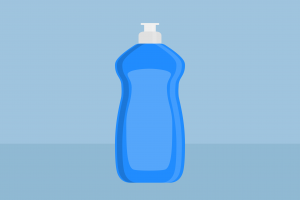 Dish soap isn’t just for your plates and silverware. If you don’t have liquid laundry detergent on hand, you can try concocting a similar solution with dish soap.
Dish soap isn’t just for your plates and silverware. If you don’t have liquid laundry detergent on hand, you can try concocting a similar solution with dish soap.
Mix one teaspoon of dish soap with one cup of water. Spray this mixture gently onto the mattress, being careful not to over-soak the mattress. Leave the mixture alone for a few minutes, then use a damp cloth to rinse the solution away.
Baking Soda
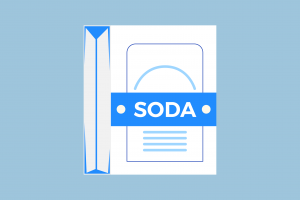 Baking soda is a good stain remover and odor neutralizer. To remove stains, mix one part baking soda with two parts of cold water. Rub this baking soda milky solution on the stain, letting it sit for half an hour.
Baking soda is a good stain remover and odor neutralizer. To remove stains, mix one part baking soda with two parts of cold water. Rub this baking soda milky solution on the stain, letting it sit for half an hour.
Later, dip a dry cloth in clean water and remove the residue of the baking soda solution. Once cleaned, blot the area with a clean dry towel or a set of paper towels. Alternatively, sprinkle baking soda directly onto the stain and vacuum it up after 8 hours or overnight.
To deodorize your mattress topper sprinkle baking soda all over it and let it rest for 8 hours or overnight. Later vacuum the surface, ensuring there are no baking soda particles remaining on the mattress topper. Baking soda is also an excellent material to follow up the liquid cleaners we recommend, as the powdery dust absorbs excess moisture.
Distilled White Vinegar
 Mix equal portions of distilled white vinegar and water in a bowl. Take a soft piece of cloth and dip it in the solution. Gently rub the solution onto the stain in circular motions, moving inwards. This minimizes the chances of spreading the stain. Keep repeating the process until the stains disappear.
Mix equal portions of distilled white vinegar and water in a bowl. Take a soft piece of cloth and dip it in the solution. Gently rub the solution onto the stain in circular motions, moving inwards. This minimizes the chances of spreading the stain. Keep repeating the process until the stains disappear.
Once the stains are gone, wipe off the vinegar solution with a cloth dipped in clean water. Pat dry the area with a clean towel or paper towels.
Boric Acid
 Moisten the stained area with clean water and then sprinkle boric acid (not to be confused with borax) on it. Dab and blot the stain with a sponge or soft cloth using circular motions, until the stain is gone. Avoid scrubbing, because scrubbing may set the stain further.
Moisten the stained area with clean water and then sprinkle boric acid (not to be confused with borax) on it. Dab and blot the stain with a sponge or soft cloth using circular motions, until the stain is gone. Avoid scrubbing, because scrubbing may set the stain further.
Wipe the area with a clean, dry towel. Once dried, vacuum the mattress topper, ensuring there are no boric acid residues on it.
Enzyme Cleaner
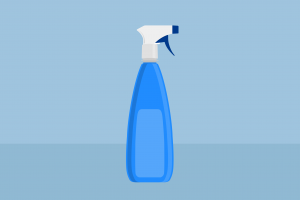 If you have a stain that’s the result of urine, blood, or just sweat, you may want to purchase a specialty enzyme-based cleaner. It’s one of our top recommendations for any stain that comes from a bodily accident, whether it’s yours, a child, or a pet’s
If you have a stain that’s the result of urine, blood, or just sweat, you may want to purchase a specialty enzyme-based cleaner. It’s one of our top recommendations for any stain that comes from a bodily accident, whether it’s yours, a child, or a pet’s
Typically, you can find enzyme cleaners in the laundry section of a grocery store, near the various detergents.
Spray the enzyme cleaner onto a cloth before blotting at the stain. Usually, this accomplishes the effect of a deeper cleaning without too much scrubbing.
An enzyme can help you if you’re looking to tackle any one of these bodily-related stains:
- How to Remove Blood Stains on Your Mattress
- How to Clean Vomit from a Mattress
- How to Remove Urine Stains and Smell From a Mattress
- How to Get Sweat Stains Out of a Mattress
- How to Get Poop Stains out of a Mattress
Hydrogen Peroxide
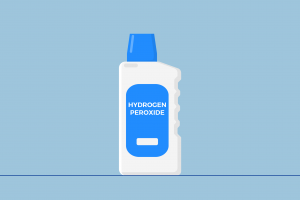 If you want to remove a blood stain or another stubborn stain from your mattress topper, you might want to try hydrogen peroxide. Typically, you mix one part hydrogen peroxide with one part water. Blot carefully at the stain with this mixture.
If you want to remove a blood stain or another stubborn stain from your mattress topper, you might want to try hydrogen peroxide. Typically, you mix one part hydrogen peroxide with one part water. Blot carefully at the stain with this mixture.
We must note hydrogen peroxide can be damaging to memory foam and other foam toppers. We only recommend it as a last resort, when other cleaners have failed to remove a stain.
It’s also possible to mix hydrogen peroxide with water to kill mold on a mattress, but we recommend that only if the mold is surface level. If the mold has penetrated to the mattress’s interior, it’s not possible to clean it.
Air Dry
 Drying your mattress topper completely is a crucial part of its maintenance and care. If there are traces of moisture in the mattress topper when you place it back on the bed, you will likely notice mold and mildew growth on it eventually. This damages your mattress topper and compromises your sleeping safety.
Drying your mattress topper completely is a crucial part of its maintenance and care. If there are traces of moisture in the mattress topper when you place it back on the bed, you will likely notice mold and mildew growth on it eventually. This damages your mattress topper and compromises your sleeping safety.
Memory foam takes some time to dry. Keep it in a well-ventilated room with fans on, to speed up the drying process. If you sleep with a fan on, aim this fan at your topper if you can. If it’s a ceiling fan, simply leave it running.
You may expose your mattress topper to direct sunlight for 30 to 40 minutes during the morning hours. You can turn the topper onto its side or elevate it with bed risers as time passes, to help the sunlight and air dry out the entire mattress topper. The heat absorbs excess moisture and eliminates odors as well, without you having to do anything.
Avoid direct sunlight at noon or afternoon because the high heat may damage the structure of memory foam. Depending on the size and thickness of the topper, along with your local climate, it may take a few days for the topper to finish drying.
Ways to Extend the Life of Memory Foam Mattress Toppers
High-quality mattress toppers usually last about three to four years but with proper care, they may last longer. Their durability depends on their thickness, as the thinner ones wear out faster. You may use fitted sheets and mattress protectors to prolong the life of your mattress toppers.
Fitted Sheets
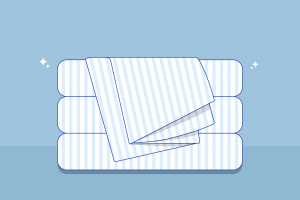 Sometimes, fitted sheets have deep enough pockets to accommodate your mattress topper along with your mattress. For example, a 12-inch tall mattress and a 4-inch tall topper will easily adjust in a fitted sheet with more than 16 inches deep pockets.
Sometimes, fitted sheets have deep enough pockets to accommodate your mattress topper along with your mattress. For example, a 12-inch tall mattress and a 4-inch tall topper will easily adjust in a fitted sheet with more than 16 inches deep pockets.
Measure the depth of your mattress and the mattress topper, before buying a fitted sheet to accommodate both. The thinner toppers are usually firm, while the thicker toppers feel plush.
Fitted sheets prevent the accumulation of dead skin cells, dust mites, and other indoor allergens on your mattress topper. Wash them frequently to avoid a buildup of debris.
Mattress Protectors
 Use a mattress protector to avoid stains from accidental spills. They are made of waterproof material, offering an easy safeguard against liquid spills. Aside from keeping your topper clean, a protector is an essential way to stretch out your mattress’s lifespan.
Use a mattress protector to avoid stains from accidental spills. They are made of waterproof material, offering an easy safeguard against liquid spills. Aside from keeping your topper clean, a protector is an essential way to stretch out your mattress’s lifespan.
For example, mattress protectors minimize friction on the surface, which can cause lint balls on the mattress to form.
Some mattress pads are also waterproof, serving as mattress protectors while increasing surface comfort. No matter the exact design, a protector can help you keep a mattress topper or new mattress in fine working order for years to come.
When making up a bed, most place the mattress topper on their sleep surface, then cover it with a protector and a fitted sheet. Mattress protectors can be machine washed using a mild detergent.
More Guides to Bedding Care
For pillows:
- How to Wash and Dry All of Your Pillows
- How to Wash a Body Pillow
- How to Disinfect Your Pillow
- How to Fluff a Pillow
For sheets:
- How Often Should You Wash Your Sheets?
- How to Make Sheets White with Household Items
- Can You Wash Sheets with Clothes and Other Items?
- How to Get Blood Out of Sheets
- How to Iron Sheets Like a Pro
- How to Make Sheets Softer
For blankets and other coverings:
- How to Clean a Comforter
- How Long Does It Take to Dry Clean a Comforter?
- How to Wash a Quilt
- How to Wash a Duvet
- How to Clean an Electric Blanket Safely
- How to Clean a Weighted Blanket
- How To Wash a Crochet Blanket
For other items:
- How Often Should You Wash Your Mattress Protector?
- How to Get Pet Hair Out of Bedding
- How to Clean an Upholstered Bed Frame
- How to Dry a Wet Mattress After Water Damage
- How to Get Rid of Bed Bugs in a Mattress
FAQs
Can I use hydrogen peroxide to remove stains on my memory foam topper?
Hydrogen peroxide is an effective stain remover, but it may discolor the fabric cover if you try to use it to clean a mattress topper. Some stubborn stains may need a different approach for removal, as regular household items may not be effective enough. In such cases, it’s better to use an enzyme-based stain remover, available in the laundry section of any general store.
Can I put memory foam in the washer?
No, machine-washing a memory foam topper spoils its structure. The strong agitation may rip the foam, making the mattress topper unfit for use. Plus, larger toppers simply won’t fit inside a home washing machine.
If your mattress topper has a stain, use spot-cleaning methods to treat it. You can also freshen up and deodorize your topper with a simple application of baking soda. Avoid putting memory foam in the dryer as well.
Why do foam mattress toppers turn yellow?
A build-up of sweat and body oil can cause yellow stains on your mattress topper’s cover fabric. You can remove these stains by using baking soda or vinegar on them. It’s best to tackle them as soon as you notice, rather than give the stains time to set in.
To best avoid yellowing stains and learn how to tackle them with simple household items, we recommend our guide to whitening sheets.
Which is better: a memory foam or gel mattress topper?
It depends on your preference. If you want a cooling feel on your bed, opt for gel mattress toppers. They are a good option for hot sleepers. While choosing a mattress topper, make sure you find your preferred firmness option whether it’s a memory foam or gel foam.
What is the difference between mattress topper and a mattress pad?
Mattress pads are thinner than mattress toppers. They are used to soften the feel of your bed, while mattress toppers can soften or firm up the feel of your bed. Some mattress pads can be machine washed in cold or warm water on a gentle cycle using mild detergent.
Conclusion
Mattress toppers play an important role in enhancing your comfort in bed. However, cleaning a mattress topper can be challenging without proper knowledge. Once you know the general rules of cleaning mattress toppers, it’s convenient to maintain them.
Most of the items required for cleaning are usually easily available in all households. Read the instructions on the mattress topper care label to learn what should be avoided while cleaning them.
About the author
April Mayer is a sleep expert and writer with a degree in exercise physiology. She has dedicated her career to exploring the relationship between sleep and productivity. Her insightful articles, such as "The Surprising Way Your Mood Might Be Messing With Your Productivity" and "Wake Up to More Productive Mornings," have been featured in reputable publications like Forbes, Greatist, Real Homes, Thrillist, Tom's Guide, and Eat This, Not That. With a passion for helping others lead more productive lives through restful sleep, April offers valuable expertise on foods and vitamins for better sleep. As a trusted member of the Early Bird team since March 2020, she continues to provide informative and well-researched content.
View all posts



